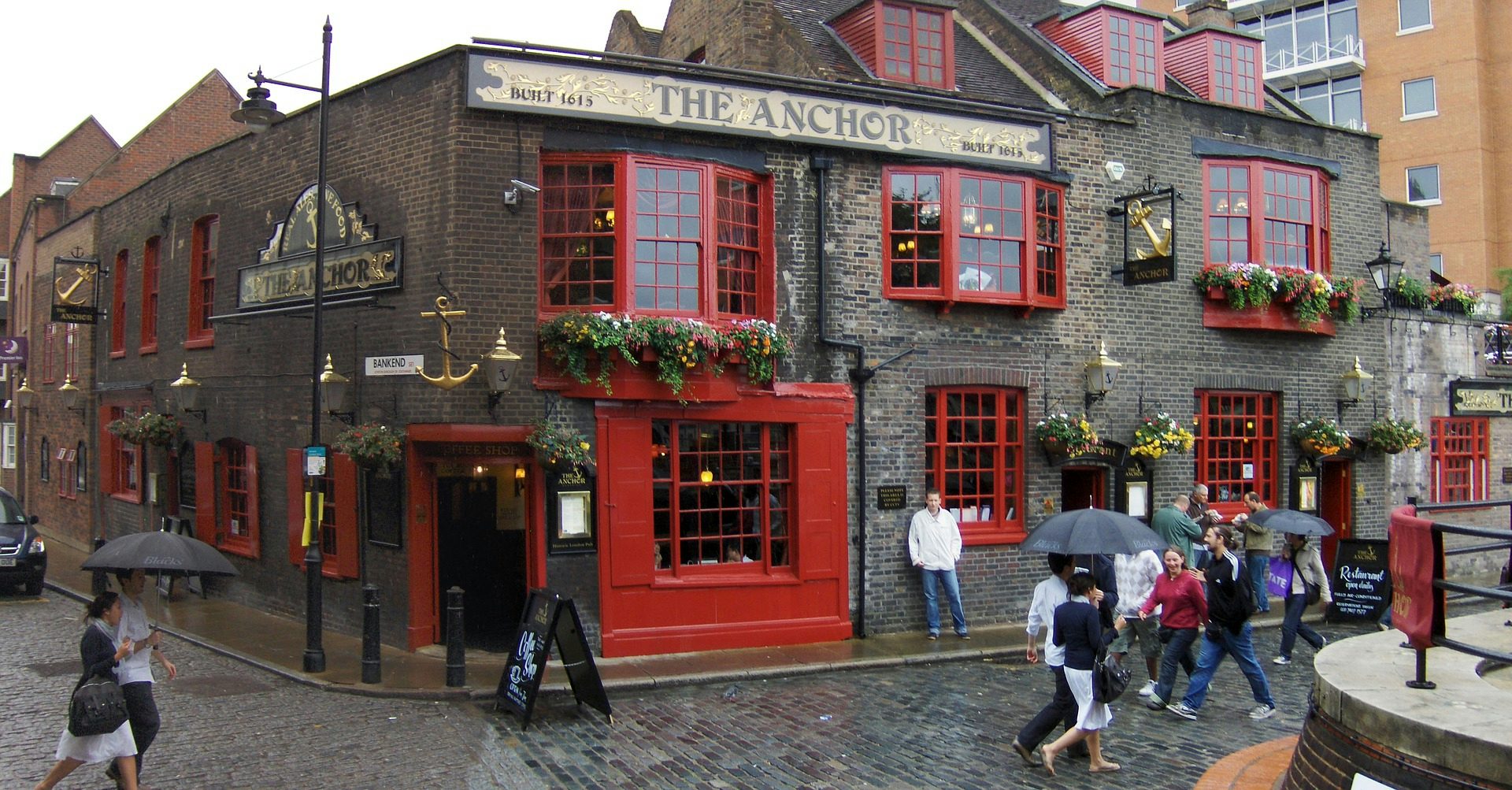
As a driver, you often face situations involving pedestrians on and near the road. Pedestrians may be unaware of the road rules or for other reasons enter the road environment unexpectedly.
You should slow down and be very careful in darkness and other low-visibility situations (e.g. rain) as more than half of pedestrian fatalities occur during these times.
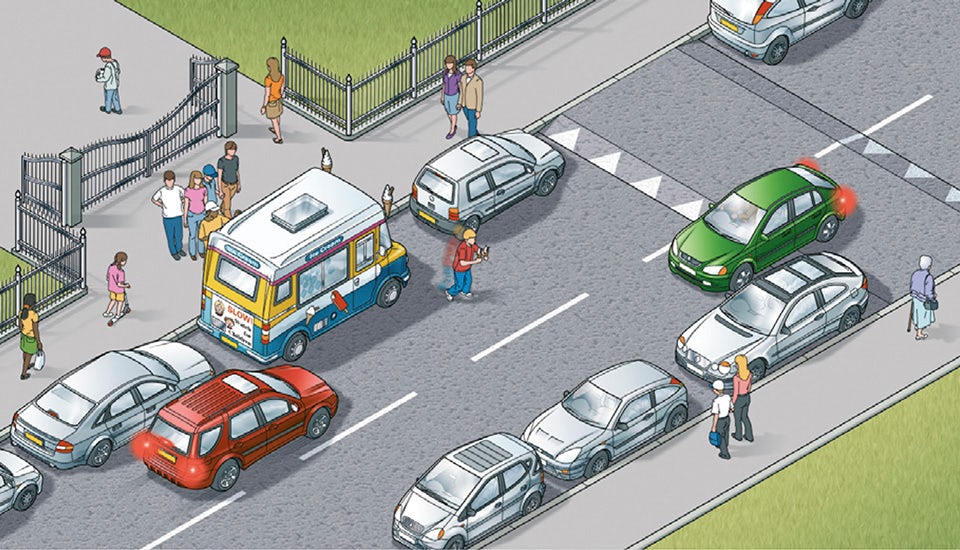
Drive carefully and slowly when
- in crowded shopping streets, Home Zones and Quiet Lanes or residential areas
- driving past bus and tram stops; pedestrians may emerge suddenly into the road
- passing parked vehicles, especially ice cream vans; children are more interested in ice cream than traffic and may run into the road unexpectedly
- needing to cross a pavement or cycle track; for example, to reach or leave a driveway. Give way to pedestrians and cyclists on the pavement
- reversing into a side road; look all around the vehicle and give way to any pedestrians who may be crossing the road
- turning at road junctions; give way to pedestrians who are already crossing the road into which you are turning
- the pavement is closed due to street repairs and pedestrians are directed to use the road
- approaching pedestrians on narrow rural roads without a footway or footpath. Always slow down and be prepared to stop if necessary, giving them plenty of room as you drive past.
Pedestrians hit by vehicles travelling at speeds exceeding 25 mph are unlikely to survive.
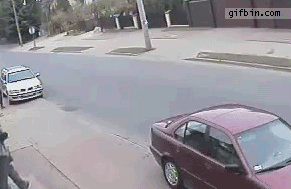
Some pedestrian give way rules
There are many situations where you must give to pedestrians. Pedestrians are vulnerable in a crash, and they are therefore protected by road rules. Never overtake another vehicle that has stopped or is stopping at a crossing! Give way to anyone still crossing after the signal for vehicles has changed to green.
Pedestrian crossings
You MUST NOT park on a crossing or in the area covered by the zig-zag lines. You MUST NOT overtake the moving vehicle nearest the crossing or the vehicle nearest the crossing which has stopped to give way to pedestrians. In queuing traffic, you should keep the crossing clear.

You should take extra care where the view of either side of the crossing is blocked by queuing traffic or incorrectly parked vehicles. Pedestrians may be crossing between stationary vehicles.
Zebra Crossings

As you approach a zebra crossing
- look out for pedestrians waiting to cross and be ready to slow down or stop to let them cross
- you MUST give way when a pedestrian has moved onto a crossing
- allow more time for stopping on wet or icy roads
- do not wave or use your horn to invite pedestrians across; this could be dangerous if another vehicle is approaching
- be aware of pedestrians approaching from the side of the crossing.
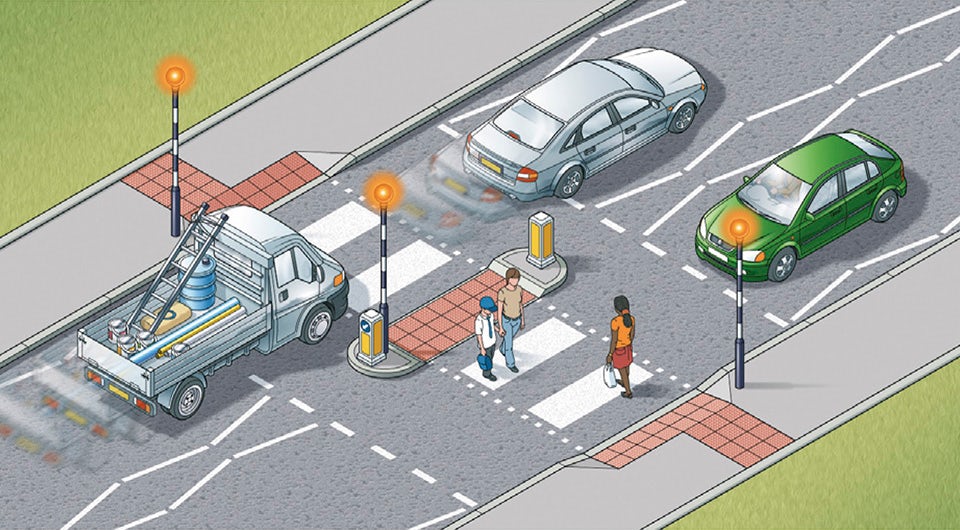
Pelican crossings
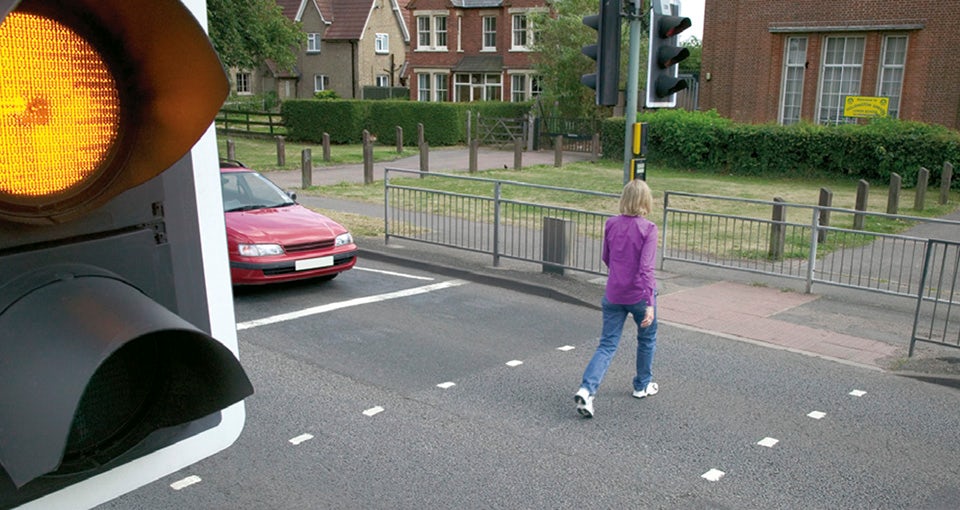
These are signal-controlled crossings where flashing amber follows the red ‘Stop’ light. You MUST stop when the red light shows. When the amber light is flashing, you MUST give way to any pedestrians on the crossing. If the amber light is flashing and there are no pedestrians on the crossing, you may proceed with caution.
Pelican crossings which go straight across the road are one crossing, even when there is a central island. You MUST wait for pedestrians who are crossing from the other side of the island.
Toucan, puffin and equestrian crossings
These are similar to pelican crossings, but there is no flashing amber phase; the light sequence for traffic at these three crossings is the same as at traffic lights. If the signal-controlled crossing is not working, proceed with extreme caution.
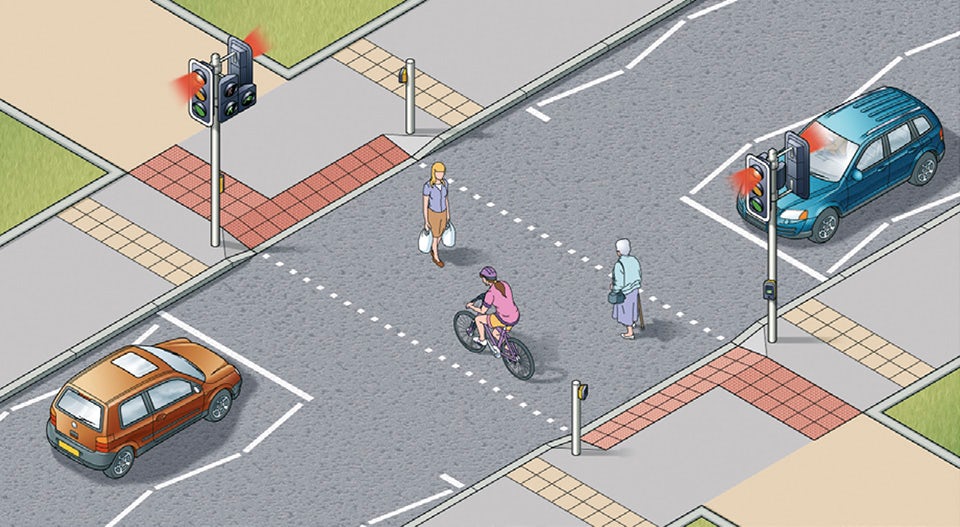
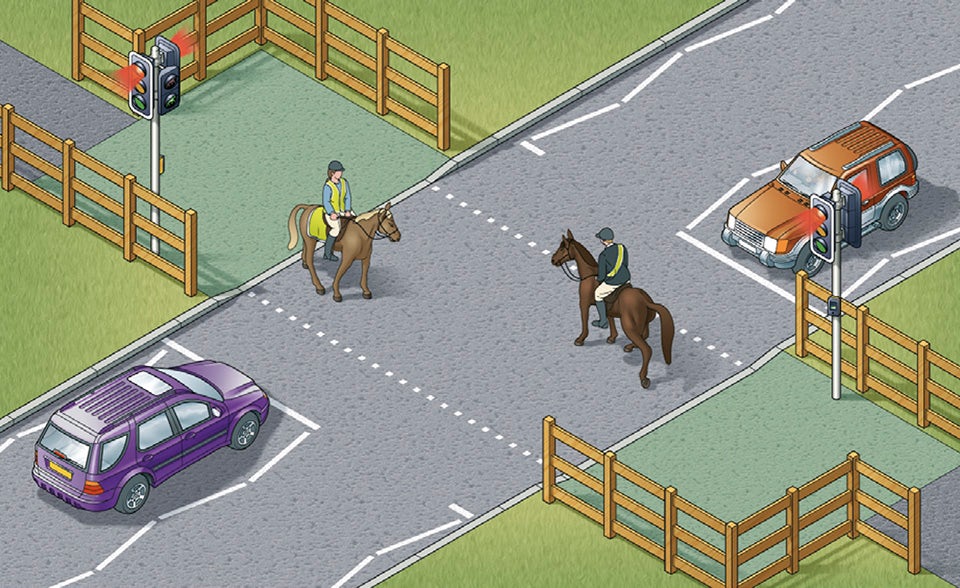
Home Zones and Quiet Lanes
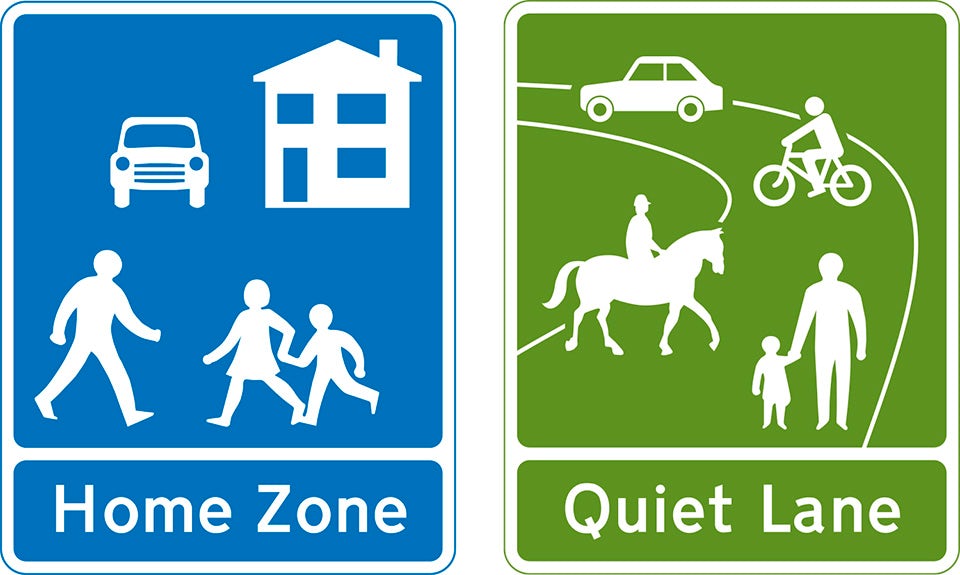
Near schools
Approach with great care, and at a speed from which you can safely stop. Children are unpredictable and could at any moment run out onto the road. Be particularly aware of young cyclists and pedestrians.
In some places, there may be a flashing amber signal below the ‘School’ warning sign which tells you that there may be children crossing the road ahead. Drive very slowly until you are clear of the area.
Some schools use school crossing patrols (or “Lollipop people”) to help children cross roads safely. You MUST stop when they show a ‘Stop for Children’ sign.
School buses

Drive carefully and slowly when passing a stationary bus showing a ‘School Bus’ sign as children may be getting on or off.
Intersections and pedestrians

You must always give way to pedestrians crossing the road when you are turning. Elderly people or disabled may need more time to cross than allowed by the lights. Always let them cross the road safely before driving on.
